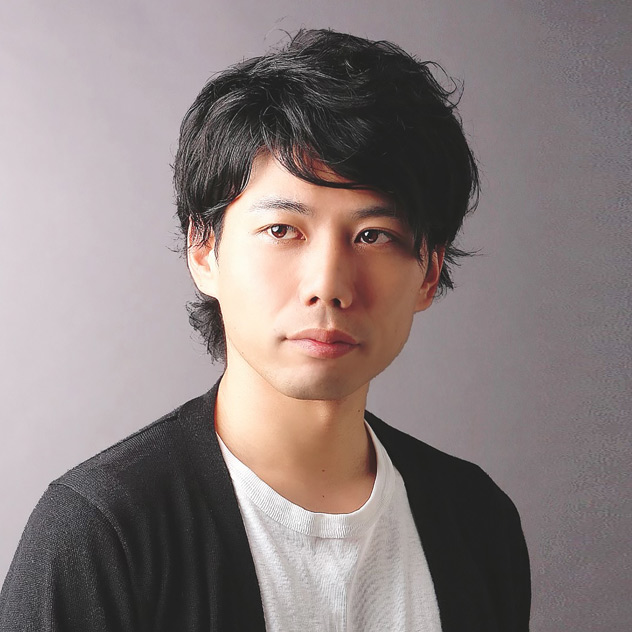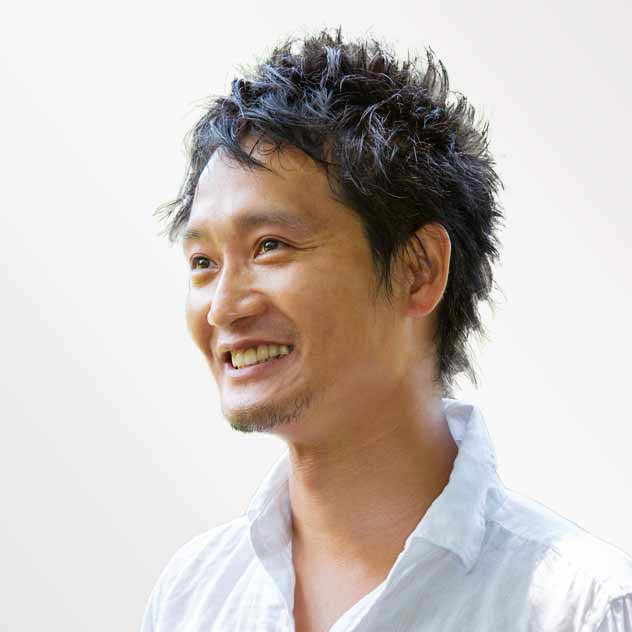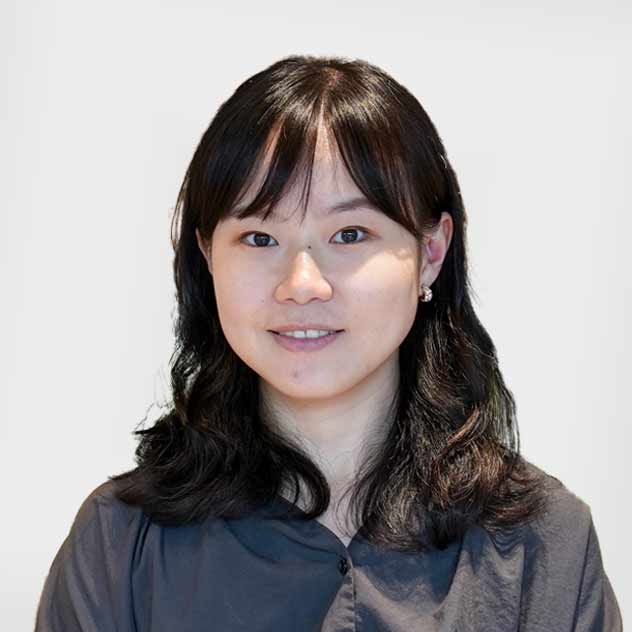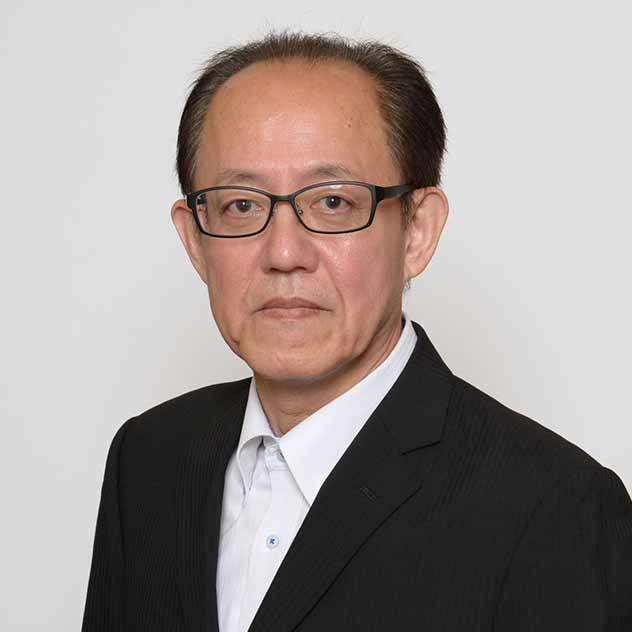A “The New Oriental Garden” created by the magnificent scenery of China and the techniques of Oriental gardens
“Landscape Design of the Xitan Hotel Beijing”
Scroll Down
The Xitan Hotel Beijing opened in May 2022 in the mountains about an hour's drive from downtown Beijing, China. The landscape of this resort hotel, which was created by converting an old village, was designed by Nikken Sekkei and Nomura Landscape Laboratory. We were responsible for the landscape design from the initial concept development to construction management and completion. The result is a “The New Oriental Garden
” that incorporates the aesthetic of Oriental gardens, using the mountainous scenery of China as a “shakkei (borrowed scenery).” What was the unique design process that took place over a period of about five years, with a “hands-on approach” with the client?
CATEGORY
A luxurious experience created by a view that can only be found here.
The scenery is something that could be called a utopia, created by the interplay of China's magnificent natural environment, the activities fostered by the villagers, and the gardens that reflect the aesthetic sense of the Orient. This is a luxurious resort that has been recognized by Relais & Chateaux, a global organization that only hotels and restaurants that have passed strict inspections can join.
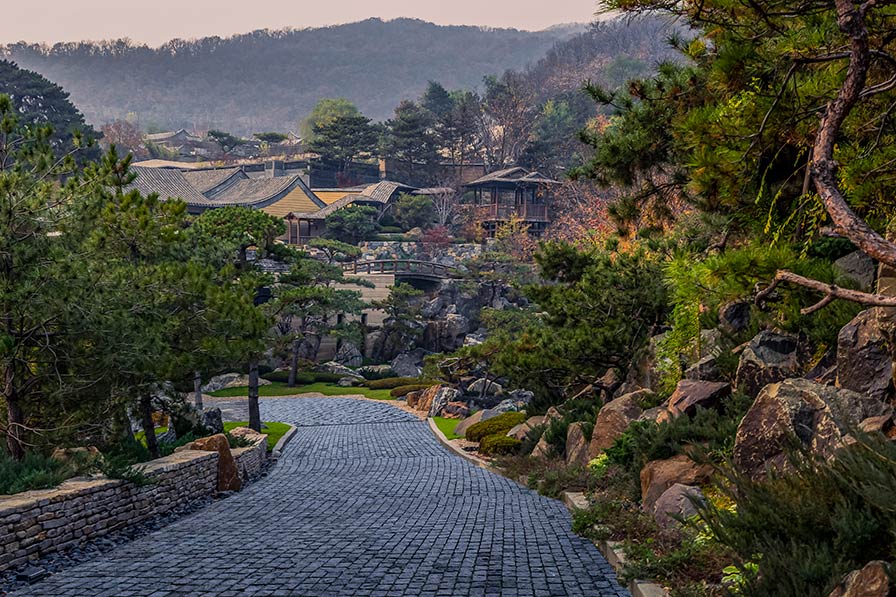 Approach ©Nikken Sekkei
Approach ©Nikken Sekkei
After climbing up the mountain, passing through the gate, and descending into the valley via a long approach, magnificent long-distance views and philosophical close-up views unfold one after another, inviting visitors to a paradise on earth. A project spanning around five years was launched to create a new landscape that makes the most of the local context.
Using majestic shakkei (borrowed scenery) and Oriental garden techniques to create the world of a landscape painting
The concepts and six keywords that were developed in this way are “Bunjinsankyo” (Literati’s Mountain Retreats), “varied,” “mountain colors,” “elegant,” “rustic,” “warm and gentle,” and “tranquil.” The image was of the world of landscape paintings from the Northern Song period.
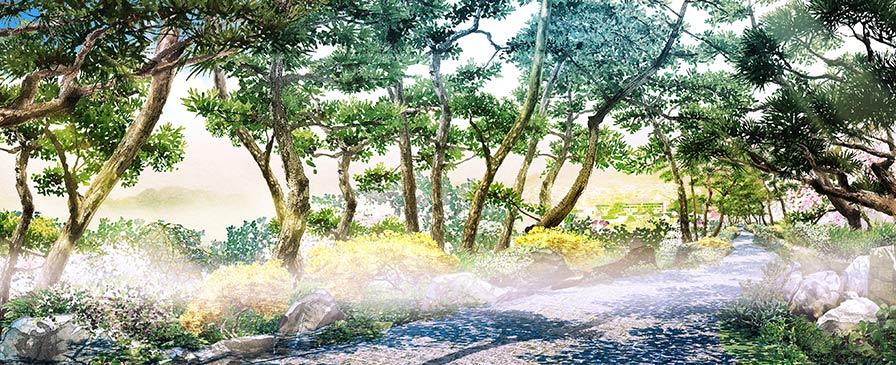 Bunjinsankyo Sketch ©Nikken Sekkei
Bunjinsankyo Sketch ©Nikken Sekkei
The symbol of this “Bunjinsankyo (Literati’s Mountain Retreats)” concept is the “Great Waterfall,” which has a drop of approx. 30 meters, and is located at the end of the long approach that descends from the gate to the valley. This waterfall, was created using the techniques of an Oriental garden, and is a bold and precise combination of stones. Together with the pavilion and the planting, it creates a landscape that unifies the distant and the near, as if the water stored in the mountains in the distance had gushed out to the ground.
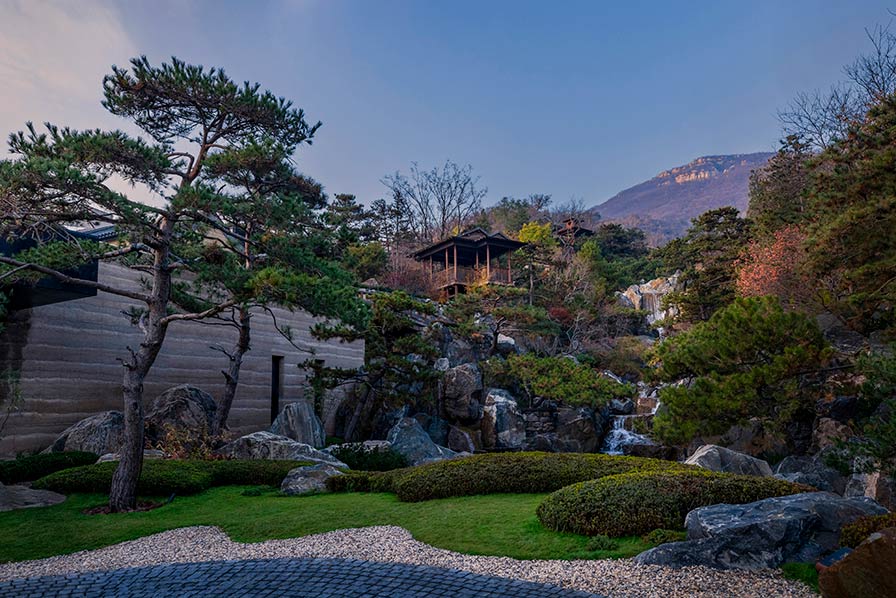 The Great Waterfall of East Valley, Nikken Sekkei Ltd.
The Great Waterfall of East Valley, Nikken Sekkei Ltd.
By integrating the process all the way through to construction, we were able to bring out the best in the context of the land.
The method involved the designers working with the client on site to decide on the details based on their own experience. After conducting repeated surveys of materials, the team selected materials for the landscaping, such as stone and plants, and supervised the work of local craftsmen. The design team stayed on site for a long time and controlled all the processes. One of the reasons for adopting this approach was to make the most of the local environment that had accumulated from the history of the former village, and to focus on “ornamental stones,” which are an important element of gardens common to both China and Japan.
-
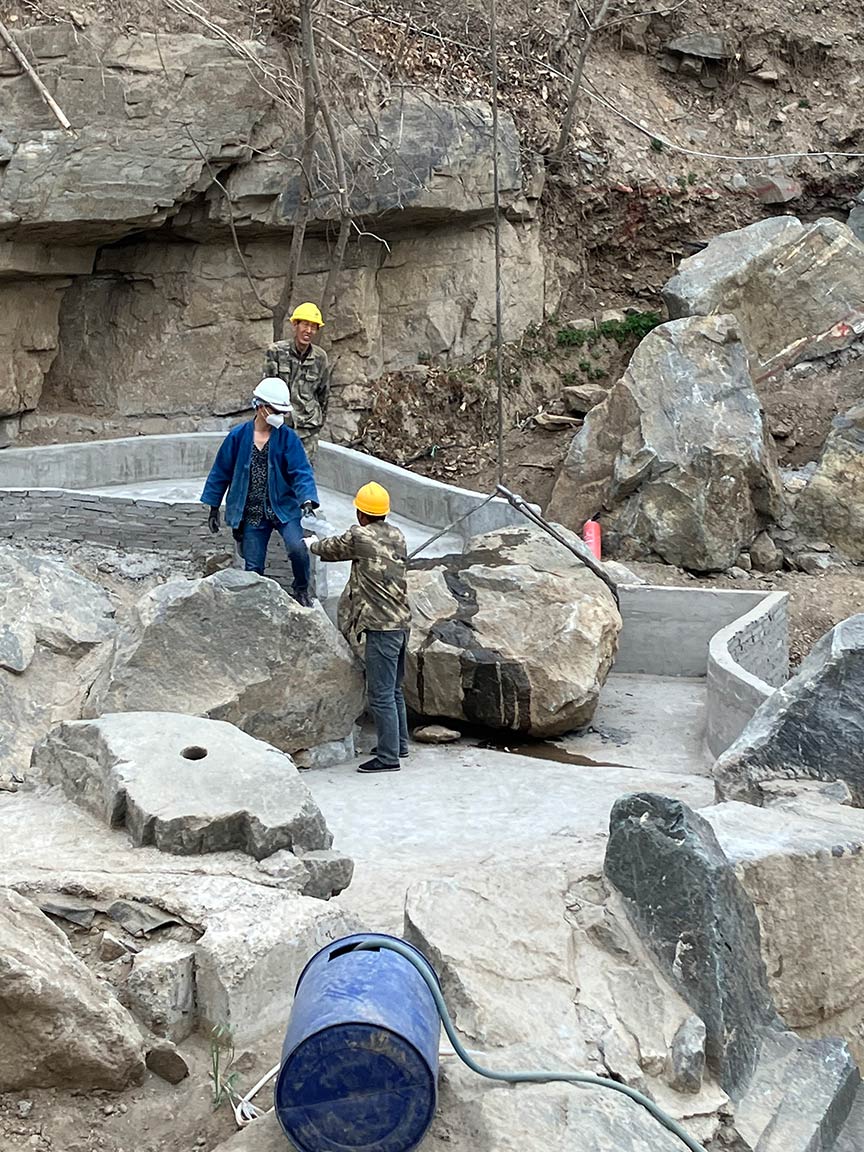 Supervision of ornamental stone construction ©Nikken Sekkei
Supervision of ornamental stone construction ©Nikken Sekkei
-
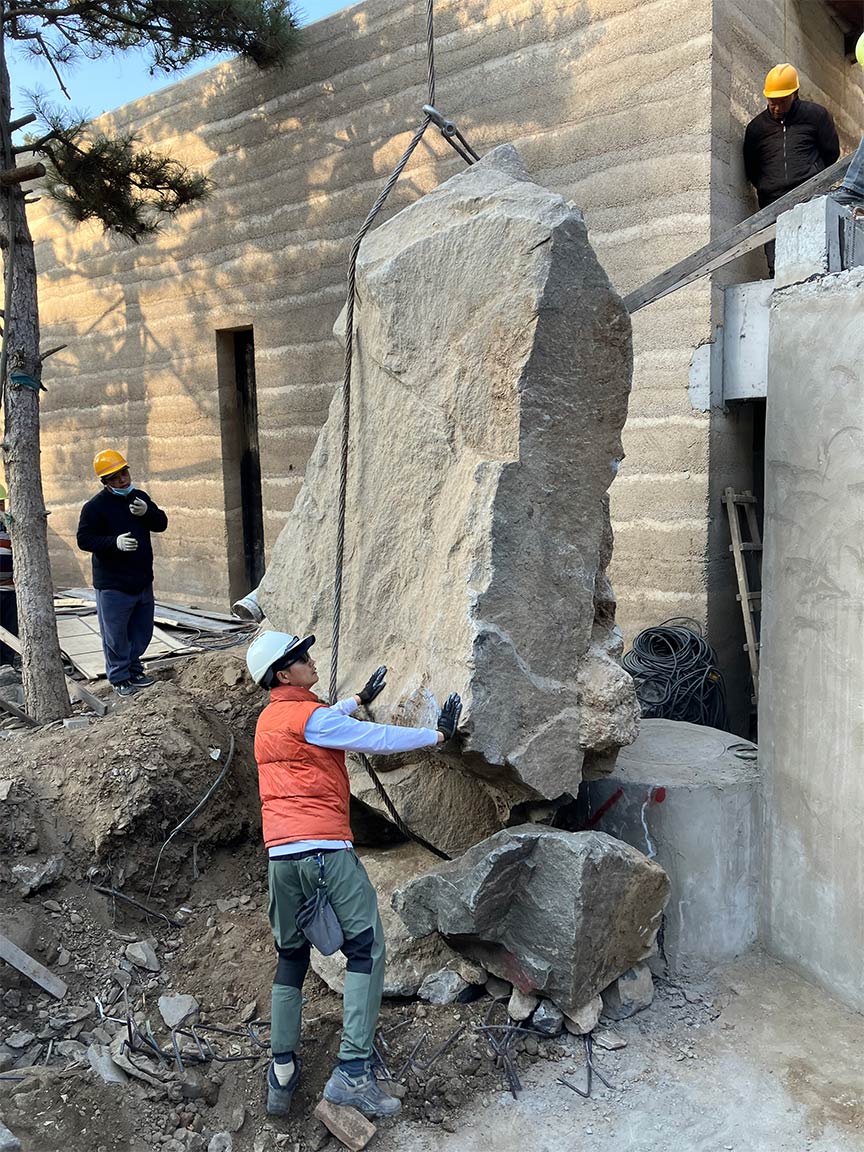 Supervision of ornamental stone construction ©Nikken Sekkei
Supervision of ornamental stone construction ©Nikken Sekkei
The design that was completed in this way, named the “The New Oriental Garden,” makes the most of the local context. It is a landscape that combines the dynamism unique to China with the delicacy of Japanese garden techniques, and is unlike anything that has come before.
A new approach to landscape design that is not based on formalism
The Xitan Hotel Beijing was also damaged, and the design team went to China again to work on recovery. What they did there was not just recovery work, but also a redesign. For example, the “Great Waterfall” was damaged by heavy rain, which washed away the ornamental stone, but they not only repaired the landform from a disaster prevention perspective, but also added new steps, widened the width of the flow, and added a mechanism that changes the number of waterfalls depending on the viewing angle.
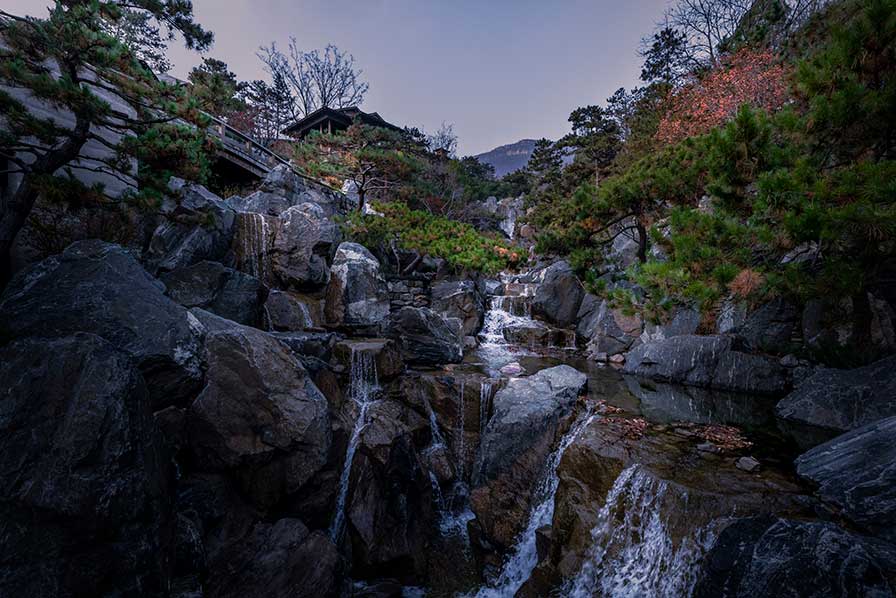 Close-up of the Great Waterfall ©Nikken Sekkei
Close-up of the Great Waterfall ©Nikken Sekkei
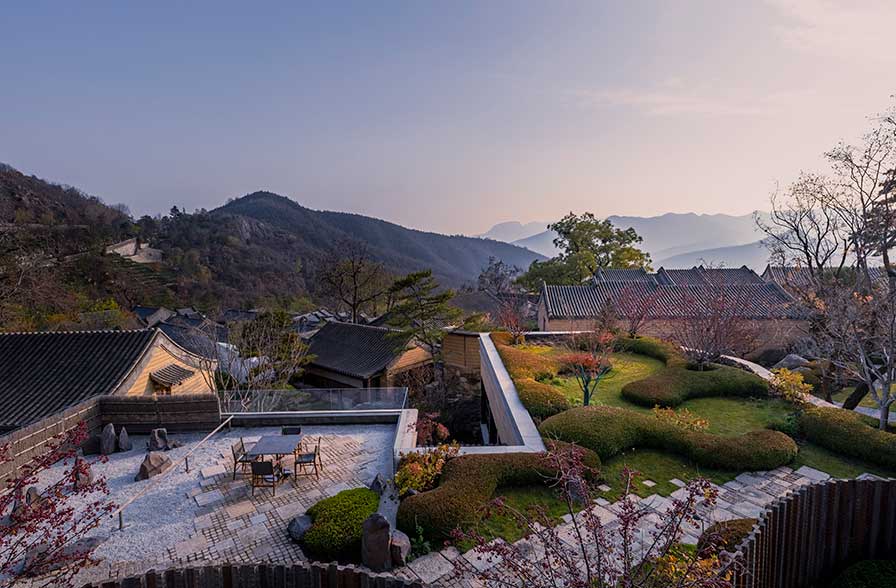 Rooftop garden ©Nikken Sekkei
Rooftop garden ©Nikken Sekkei
“The New Oriental Garden” created through this project is not a matter of style. It was born from the maximization of the unique opportunities presented by the client and the location, using all available techniques and methods. The approach of finding common elements in the natural views of the Asian region and integrating and sublimating them into a design that is unique to the location is a new model of landscape design that can only be presented by Nikken Sekkei.
